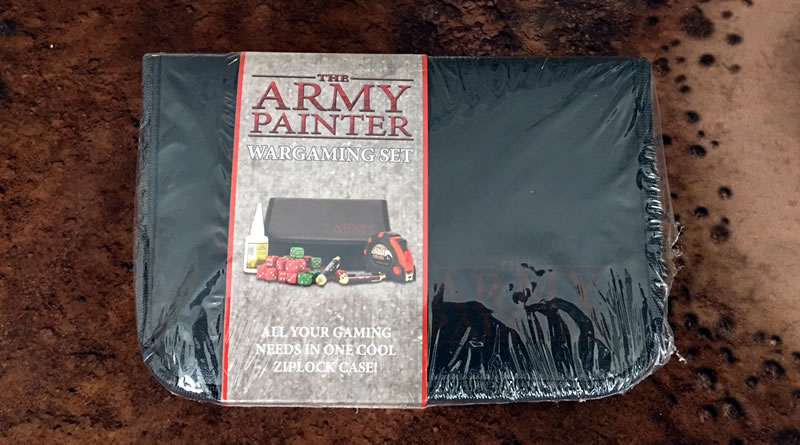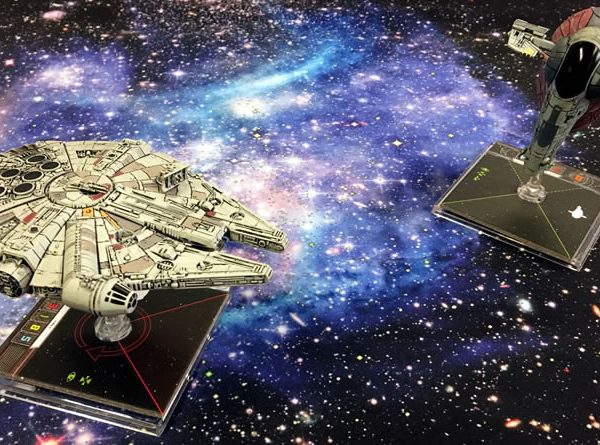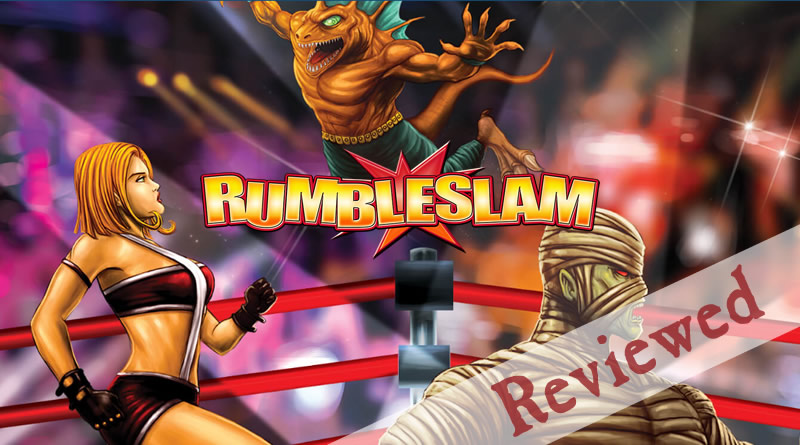At the time I didn’t acknowledge just how giving the month of November was in 2016. I was too busy with work and family life and the usual bits and bobs to sit down and be grateful that in the space of a few days I had enjoyed the re-release of Games Workshop’s Blood Bowl and the launch of this Walking Dead game by Mantic.
Friday November 25th saw me get my paws on Blood Bowl and I picked up my pre-order copy of The Walking Dead All Out War game on Monday 28th. Didn’t have any time to play them though for a couple of weeks after that and then it was the run up to Christmas and, well, you know how it goes. When some spare time did arrive it was Blood Bowl that got the lion’s share of it (sorry Mantic) but that date with destiny had been over 27 years in the making for me. It was my homecoming; my testimonial match where I hand over the Blood Bowl knowledge to my own children.
Anyway, along comes Boxing Day and I finally get to properly play All Out War for the first time…and then kicked myself hard for the rest of the day for waiting so darn long to give it a whirl.
On paper this game and I is a marriage made in heaven. I love The Walking Dead TV show. I adore the comics. I love tabletop miniatures games. I am a big fan of just about everything Mantic puts out. Why the heck did I wait 28 days to start playing it?
Perhaps I was subconsciously surfing the zombie zeitgeist. I buy a zombie themed game and end up playing it 28 Days Later!!
So, many months on from playing my first game and many, many games later I feel I am finally ‘qualified’ to write this The Walking Dead All Out War game review. Hope you enjoy it…
What’s in the box?

- Gaming Mat (street scene)
- 6 Survivor Miniatures (Rick, Carl, Derek, Patrick, Liam & Sandra)
- 12 Plastic Walker Miniatures
- Rulebook & Quick-Start Guide
- RV, Cars & Barriers Scenery Cards
- Supply, Game & Health Counters
- Threat Tracker & Kill Zone/Blast Template
- Range Ruler
- Game & Health Counters
- 6 Survivor Cards & 1 Walker Reference Card
- Event, Equipment & Supply Cards
- Assorted Bespoke Dice
Basic Game Overview
The Walking Dead: All Out War is a tabletop survival game using miniatures and scenarios from The Walking Dead series of comics. It is not a game based on the TV show, and this is kind of a subtle distinction, but fans of the show will not lose anything by not having read the comics. The world feels the same, but some of the character models might be new and they look like the comic characters rather than the actors in the show. For example, the Rick Grimes model doesn’t look like Andrew Lincoln, but is a spitting image of Rick from the comic…and I must add early on that the sculpting of the miniatures is absolutely top notch; they are stunning.
During the game you take control of a small group of human survivors and play against your rival and his or her band of humans in a racing battle to pick up as many supplies as possible. Whilst tackling your human opponents you also have to be wary of and often defend yourself against the walkers (zombies!) who shuffle around the playing area and are ready to take a bite out of your characters at the drop of a sheriff’s hat!
The setting for this beginner’s core set of the game is a street scene in Atlanta, where The Walking Dead story began.
What’s it like to play?
I feel that I should start off by making it very clear that this is not a ‘quick to master’ board game. It is a tabletop miniatures game and the depth of rules and gameplay is quite extensive, so if you love the TV show and kinda like board games then do not expect to open the box and be up and playing within 10 minutes. Even though the actual rulebook is relatively short there are a few complex layers that you need to get your head around and master and this is mainly down to the way that the analogue artificial intelligence of the walkers plays out. Your first few games will have you referring back to the rule book frequently.
I must also stress though that it is well worth the investment in time to learn how to play properly because this is a genuinely great game and without giving away any spoilers for our verdict is actually our favourite game released in 2016! Ok, that’s a pretty big spoiler for our verdict!!
This isn’t a ‘How To Play’ article…I could write another 3,000 words and still not fully cover that topic, but we will be releasing a tutorial video in the near future where we will explain the mechanics of the game. I will carry on with an assumption thatyou are familiar with tabeltop miniatures games and focus on the actual gameplay.
The unique feature of The Walking Dead: All Out War is the role of the walkers on the game board. At times, if you plan your moves correctly they can be your best weapon against your opponent but they can also be the most devastating curve ball that will be thrown at you. Instead of this just being a player versus player tabletop game the random nature of the walkers means that you always have to keep an eye on them and consider the consequences of any actions that you are about to take.
Let’s take a standard game scenario where you have set the playing scene up and each player has chosen their characters to play with. Scattered around the playing area will be a number of supply tokens. Generally you need to get one of your models to a supply token so that they can search it and hopefully pick up something handy to use through the game, such as ammunition for a gun or a new weapon or some armour. In standard tabletop games you would not bat an eyelid about taking out an opponent’s model by shooting it with a gun as soon as it came within range. In this game it is never that easy. Shooting a gun creates noise…and noise is a magnet for walkers!
I mentioned earlier that there is a type of analogue artificial intelligence that controls how the walkers behave in the game. Well, one mechanic of this is that if a gun is fired then it causes ‘Mayhem’ and all walkers within 10 inches of the noise will ‘shamble’ 6 inches across the board towards that noise. Although you may be used to playing games where you shoot that other player’s model you now have to decide whether attacking that character is safe. Pulling that trigger could quickly see your shooter mobbed by 2 or 3 walkers and that could soon be the end of him (or her).
Sounds tricky, but this type of behaviour also brings with it some great tactical opportunities. If your model with a gun has an enemy model between him and a few zombies then pulling the trigger might actually mean that you wound the enemy and then draw walkers onto him as they head towards the source of the noise. Your opponent can also play those types of dirty tricks on you, so you always have to be trying to think three dimensionally as you play.
The core gameplay revolves around each player taking turns to activate their miniatures and perform various actions with them. The player who holds initiative starts and activates one model. This model can perform two actions from a small list of options (move, shoot, search, hide, etc) and then the other player does the same with a model. Players take it in turns like this until all of the survivor models have had their turn. Once all of the survivor models have had their go then the game turn moves into the ‘Event Phase’.
This is where the walkers come into effect, and this phase breaks down into two core actions. Firstly the players check to see whether any of their survivors are in the ‘Kill Zone’ of any of the walker models. This is checked by using the circular Kill Zone template and if a survivor is in range then the walker is immediately moved into base contact with it, ready for a fight!
After checking the Kill Zones the second action in this Event Phase is to draw an Event Card. The player with the initiative takes a card from the top of the Event Card deck and the actions on the card are followed. This is my favourite part of the game and can be the making or breaking of a player’s success as there are plenty of juicy random elements that can be revealed here. Some cards can put walkers under the control of each player, which means you can move them into battle with one of your opponents models. Other cards have random events such as a car alarm going off (which draws the attention of every walker within 10 inches of it) or introduce extra walkers onto the board. Sometimes absolutely nothing happens, which can be a welcome relief in the later stages of the game.
Event Cards also sometimes have a value on them which increases something called the Threat Level. This Threat Level increases through the game and usually starts off on the ‘All Quiet’ setting. The Threat Level tracker is numbered from 1 to 18, and moves from ‘All Quiet’ (1-3), to ‘Low Threat’ ( 4-8), ‘Medium Threat’ (9-13) and finishes at ‘High Threat’ (14-18). Actions such as shooting guns also increases the Threat Level and the increase in threat represents the mounting tension and pressure as the scenario unfolds. As the Threat Level increases the walkers can become more dangerous to players and some survivor models can also end up ‘panicking’ which can lead them to running away or screaming or other unwanted actions!
The Event Cards have different actions on them relating to the different levels of threat. Taking the ‘Won’t Stay Down’ card as an example, in the All Quiet and Low Threat stages there is a 50:50 chance that any prone walkers will stand up (which is tame enough). On Medium Threat this also happens but each player also rolls a dice and can take control of a number of walkers relating to the dice roll. On High Threat all prone walkers automatically stand up and 2 dice are rolled giving the possibility of up to 6 new walkers entering the field of play!!
Managing and adapting to the Threat Level is a key factor in the game and it also increases the action and excitement as the game progresses and is a very cool game element.
Once the Event Phase has been resolved then any fights that need to be resolved get worked out in the Melee Phase. In the early stages of the game there may be no melee to resolve, so this stage is skipped, but if any survivors are in base contact with an opponent’s model or a walker then melee occurs. If Melee is taking place then the Threat Level increases by 1 also.
Melee is worked out by rolling dice and each of the survivor models has their own values or equipment that are taken into account. Some characters are better than others at fighting, as you would expect and so get more dice to roll. Adding weapons such as an axe or a crowbar also adds more dice. More often than not melee takes place between survivor characters and walkers, and individually they are quite easy to fend off. Walkers do become dangerous though when two or more crowd around a survivor as the number of dice they get to roll when attacking increases exponentially. Three walkers attacking a weak or average survivor at the same time can be deadly!
The dice that get rolled during melee (and when shooting weapons) all have an ‘!’ symbol on some of the sides. This symbolises a critical hit has occured. Against a walker a critical hit is a headshot which ‘kills’ the walker and it is removed from play. Any other type of damage against a walker sees it get pushed back 1 inch and then laid prone on the board. Against survivor characters a critical hit just adds an extra wound.
If a walker gets a critical hit result against a survivor and wins the combat then the survivor has been ‘Bitten’ and this can lead to that model eventually turning into a walker later in the game!
Hopefully you are getting the feel that there is plenty of meat on the bones of this game. The rulebook is not a great big heavy thing but there are enough levels of depth and complexity to keep you coming back time after time. You certainly get better and better at the game the more times you play but the random elements of the Event Phase can see your luck run out quite quickly. Sometimes you lose because of this and sometimes your victory becomes hard earned and all the more sweeter when early on you looked set to run away with the win.
Victory usually revolves around who can grab the most supply counters or who can kill every member of the opposing group of survivors, but you can make up your own conditions or ‘missions’. We tend to play with an odd number of supply tokens on the board and when you collect a majority you then have to also make it off the board safely from the side that you started on. There is a gaming mat in the box for you to play on but as you get more used to the game you will want to perhaps play on a bigger surface and add more scenery elements. Barricades and buldings from other tabletop games work perfectly well, as do some toy model cars if the scale is about right. Mantic have produced a scenery booster set which adds 3D cars and barricades and these are very good also. So too is the deluxe gaming mat accessory which is the same as the one in the box but made out of mousemat material instead of paper.
Loads of extra characters are also available as booster sets, so you don’t have to keep playing with the same models from the starter box set. There is a points system through the rules which means that you can play with bigger groups of survivors and keep the teams balanced against each other as every character and weapon has a points value.
The game can be played solo or as a two player game, but there is no reason why three or four players can’t face off as more booster sets are purchased. Scenarios and games are only limited by your own imagination. You will start by playing on the 20 inch playmat that is included in the box set but eventually you may graduate to bigger and bolder adventures…check out this very impressive beach setting game by the Beasts of War team for inspiration:
Pretty cool huh?!!
Who would like it?
I would say that anyone who has enjoyed a tabletop miniatures game would love this one, mainly because of the added unpredictable elements that the walkers provide. Anyone who properly loves The Walking Dead will have a great time also. People who tick both of those boxes are going to be instantly hooked and will quickly graduate to creating scenarios on bigger boards with more survivors and walkers in play, all of which is feasible with the great range of expansion kits and boosters that Mantic have been releasing.
It is not a game for young children, but that said the 9 & 10 year old EH Gaming members have lapped it up since that first game on Boxing Day and have become very adept at it. It helps that they have an already (un)healthy interest in tabletop games and miniatures though so perhaps this isn’t one to drop on a young child who still hasn’t graduated from Teletubbies and Junior Monopoly.
Personally I have enjoyed introducing it to anyone who will indulge me for 10 minutes. Not everyone has shared my enthusiasm for it, but I can count them on one hand and most have had good fun playing it for the first time, especially once they realise how dirty they can play when a walker comes under their control. That really shows a person’s true colours…
Summary
The Walking Dead: All Out War is not a perfect game…but what is? It is definitely an outstanding game though and even with a re-release of Blood Bowl getting me all giddy I am proudly awarding the EH Gaming 2016/17 Game of the Year accolade to Mantic for this box of fun. I am completely hooked on it and have found myself playing the solo scenarios in lunch breaks when no-one else can be found to play with. I don’t see the novelty wearing off anytime soon either and that is the mark of a great game for me. The ongoing support with new releases has also been outstanding so this game is frequently getting a refresh and evolving.
Mantic, I tip my sheriff’s hat to you!
Our Verdict

Damn it Carl, this game scores 11 out of 12!!
Publisher: Mantic Games
No. of Players: 2
Recommended Age: 14+
Time To Play: Around 1 hour
RRP: £39.99



